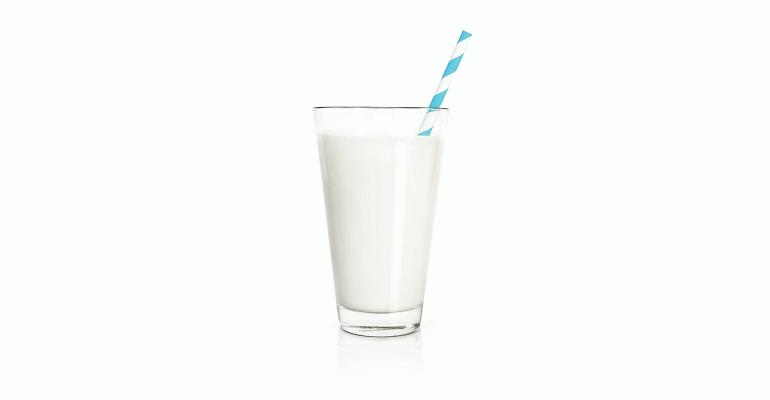While rising inflation has swayed many consumers to tighten their purse strings on groceries, one area of the supermarket that hasn’t been that impacted is the dairy department.
Jessica Ives, professional development coordinator at the International Dairy Deli Bakery Association (IDDBA), reported that dairy sales rose 13.5% year over year to nearly $6.3 billion for the five-week May selling period, according to IRI data.
“The consistency of the weekly sales levels, all at least $1.2 billion, is encouraging as it means demand is holding strong, certainly when compared to pre-pandemic levels,” Ives said.
Not surprisingly, milk stayed on top of the category with $1.6 billion in sales, followed by natural cheese at $1.1 billion and yogurt at $836 million.
Despite an abundance of plant-based and non-dairy beverages filling the shelves in the past few years, dairy milk still is going strong, thanks to new flavored milks and healthier low-fat and fat-free options.
Kyle Kirkpatrick, director of center store merchandising at The Giant Company, the Carlisle, Pa.-based operator of Ahold Delhaize USA’s Giant/Martin’s supermarkets, noted that dairy milk continues its historic high sales.
“For commodity milk, we have seen trends towards higher fat contents,” Kirkpatrick said. “However, for kids’ flavored milks, our customers prefer lower-fat varieties.”
In the yogurt segment, consumers are increasingly aware of the health benefits, as product can be high in protein, calcium, vitamins, and probiotics, according to Bill Ruschetti, senior category manager for the Bashas’ Family of Stores, based in Chandler, Ariz. Health and wellness have been more top-of-mind among shoppers since the pandemic, he added.
“Consumers are staying home and consuming more yogurt, which has increased the demand for, and sales of, multi-serve yogurt packaging,” he said. “We believe the future of the yogurt category will continue in the better-for-you, low sugar, low-calorie direction.”
Giant’s Kirkpatrick said sales of yogurt drinks are doing well in 2022, too.
Gauging the impact of price hikes
Another category with high numbers is eggs, where a 50.4% year-over-year increase in price to $4.31 in May led to a 12.8% increase in total sales volume.
IRI data from April 17 revealed that while some categories are down in overall sales units, total dollar sales have risen in the 52 weeks based on the higher prices. For instance, dairy creamers saw a 0.7% dip but, because of a price increase to $3.54 on average, the segment was up 3.9% in dollar sales.
Refrigerated dips had the biggest yearly increase in price at 20 cents higher on average, leading to an 8.4% uptick in total dollars thanks to a gain of 2.7% in total units, according to IRI data.
Butter was an outlier for dairy over the last year, as unit sales dropped 9.5%, leading to a 5.7% decrease in dollar sales to $3.47 billion over the 52 weeks. The decline largely reflects less baking at home, as people who were stuck at home during the pandemic are now resuming normal activities.
Private label has risen in importance, too, in the dairy category amid today’s high food pricing. Elizabeth Guthrie, senior director of own-brand product management at Boise, Idaho-based Albertsons Cos., said its stores offer a high-quality, value-added option with the retailer’s O Organics line of dairy products, which are USDA-certified organic and include organic, grass-fed and A2 milks.
Still, dairy remains a core ingredient in most homes, and the behavioral shift during the early days of the pandemic drove consumers to buy higher quantities of their normal dairy purchases and try new items they may not have considered before, retailers and marketers said, adding that these patterns have remained through the first half of 2022.





